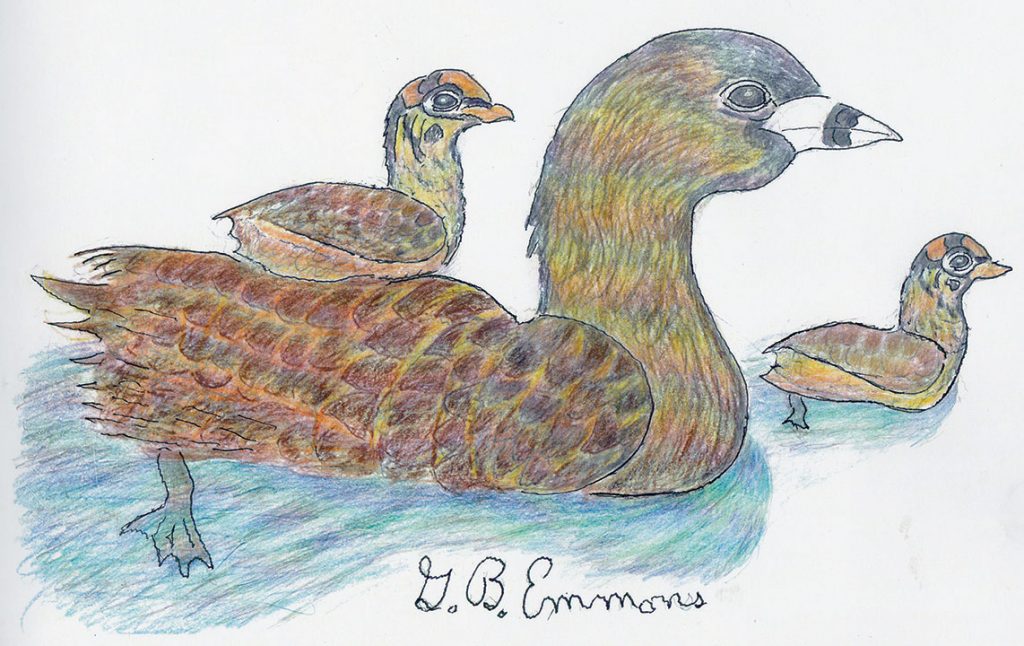The pied-billed grebe is a small brown waterfowl about the size of a chicken that is common to most North American wetlands. Yet it is so reclusive, rarely seen even by avid birdwatchers. The grebe is habitually evasive. When observed, it rarely flies, usually ducking under the water in a shallow dive with only the head visible to keep an eye on the intruder.
The Massachusetts Division of Fisheries and Wildlife now lists the species as endangered. However, it has a habit of returning to restored man-made ponds, such as the one off Egypt Lane in Fairhaven. Several grebes were sighted there recently by Carolyn Longworth, director of the Fairhaven Millicent Library. The pied-billed is her favorite bird, which she wrote about once in her birdwatcher club’s publication several years ago.
The pied-billed grebe may choose to nest twice in a season, laying between three or more eggs that hatch in about three weeks. Sadly, predation by mink and otters seems to take an annual toll. The chicks are ‘precocial’ (hatching with more advanced capability) and can swim and dive only hours after emerging from their shells. As they tire easily, they readily climb onto their mother’s back, constantly begging for food such as aquatic vegetation, seeds, frogs, tadpoles, insects, and crayfish.
When the mother senses danger, she can dive with her chicks on her back and hold them under her wings if necessary. Usually both mother and chicks soon surface to cruise along with heads held proudly high for observation. The downy crest of the crown of the chick is streaked with crimson, as illustrated.
Now as the deciduous autumn leaves are seasonally streaked with color and the grebe’s marsh habitat has a morning layer of whiteness, its migration south must begin before it freezes over, and it may be forced to drop into salt marshes if there is no unfrozen fresh water available. True to its secluded nature, the grebe will not leave until the sun goes down to migrate exclusively at night. On its way south, its dark summer plumage begins to fade to camouflage with the changing habitat, and the band of black on the bill disappears entirely. Come April, the grebes will return to our region, some from as far away as Panama.
Grebes to this very day may still be frequently found in Henry David Thoreau’s Walden Pond in Concord, Massachusetts, where he retreated to a waterside cabin to avoid the trials and tribulations of cultural society. As a transcendentalist like his friend Ralph Waldo Emerson, Thoreau believed that the true religious spirit of God could be experienced by meditation in the solitude of nature. When Thoreau heard the mystical “coo, coo, coo” call of the grebe, it may have struck a kindred note of man’s isolation. Perhaps it spoke to his inner recluse from across the still waters of his peace of mind.
By George B. Emmons
